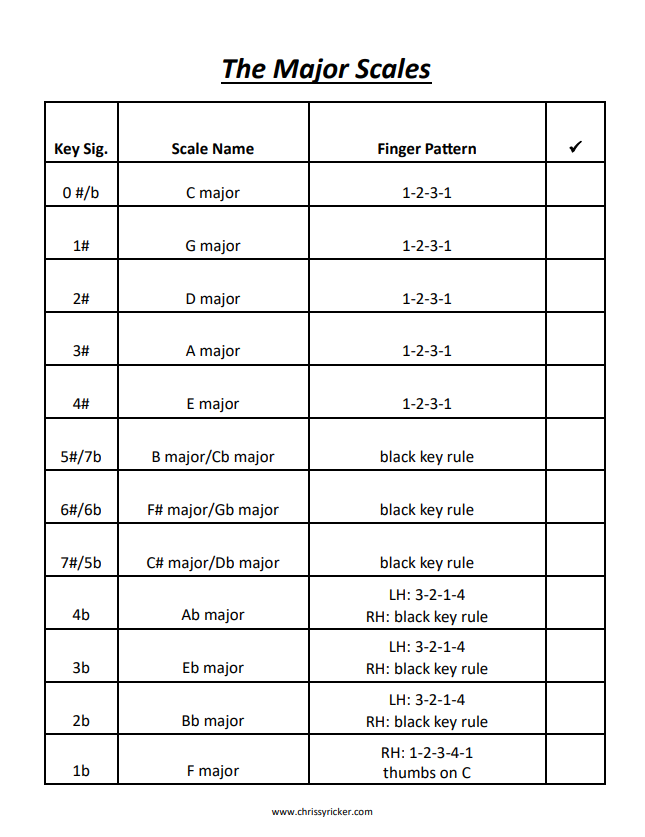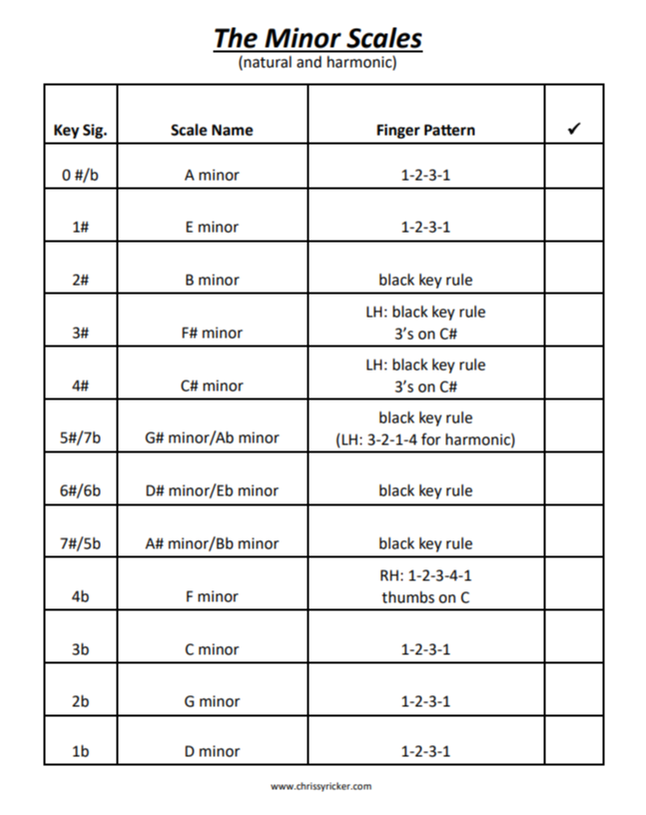
Playing scales in multiple octaves can be tricky, but there are a few tips and tricks that can definitely make the process easier.
Read on for 5 tips that will make introducing two-octave scales easier for both you and your students!
It may seem counterintuitive, but C major is actually one of the most difficult scales to play in multiple octaves because the finger pattern changes when you transition from one octave to two. Crossing under (or over) finger 4 to do the second octave of this scale can be tricky for students who are just learning the concept of playing scales in multiple octaves for the first time.
My favorite scale to start with for multiple octaves? D-flat major! It fits comfortably under the hands, with the longest fingers (2, 3, and 4) over the black keys, and the finger pattern is exactly the same no matter how many octaves you play. This gives students a chance to focus on the feeling of playing multiple octaves and maintaining good posture and body alignment (keeping the upper body centered between the arms) as they move across the keyboard.
Tip #2: Practice hands separately for a few weeks (or longer) before putting hands together.
Give students plenty of time to get used to any new finger patterns they will be using when playing two-octave scales, especially when playing the white key scales, by practicing hands separately for a few weeks before even thinking of practicing hands together. (We also do lots of chanting "under 3, under 4, under 3" for those tricky white key scales!)
Need a handy chart to help students remember the finger pattern for different scales? Click on the images below to get a free copy of either of these scale fingering charts!
I am sure I am "preaching to the choir" when I talk about the importance of slow practice! But I like to remind students that slow practice is especially important when learning to play scales in multiple octaves, because it gives them time to think ahead about the finger pattern for that particular scale and to watch for any mistakes in fingering.
I also like to have students try practicing scales in different rhythms! This not only makes scale practice more fun, it also helps with memorizing the finger pattern for each scale. Here are a few of my favorite rhythms to try:
- Quarters, then eighths: play a one-octave scale slowly in quarter notes, followed by the two-octave scale in eighth notes. This gives students time to review the finger pattern for the one-octave scale before playing it in two octaves.
- Swing rhythm: play the scale using a "long-short" rhythmic pattern.
- Reverse swing rhythm: play the scale using a "short-long" rhythmic pattern.
- Groups of 3: play the scale stopping on every third note. I talk more about the importance of choosing stopping points within the scale in my next tip!
Tip #4: When practicing hands together, choose stopping points within the scale where students can pause and make sure both hands are on the correct finger.
For example, when practicing the C major scale hands together, both hands should always land on finger 3 at the same time. This makes a perfect stopping point where students can pause and make sure the fingering is correct and think ahead to what finger comes next. If one hand is playing finger 3 and the other isn't, students will know that something went wrong with their fingering!
And that brings me to my final tip...
Tip #5: If a scale "derails," stop and start over from the beginning.
Scale practice is not the time to "keep going, no matter what." We want to make sure our students aren't memorizing incorrect fingering or bad habits as they practice their scales, because once memorized, these habits are incredibly difficult to change!
Encourage your students to stop and re-start a scale from the beginning if they see that anything is wrong with their fingering as they are practicing. That way, students will learn how it feels to play a scale correctly from start to finish every time!
What do you think? What issues do you encounter with students learning to play two-octave scales for the first time? Any tips or tricks you have found to be helpful? I would love to hear from you in the comments!



 RSS Feed
RSS Feed